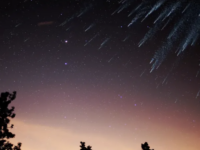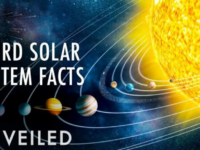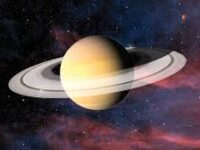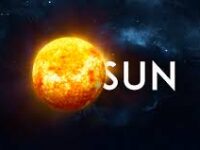Here are fascinating facts about the Sun that cover its composition, behavior, and significance in the universe:
If the solar system were a movie, the Sun would be the lead actor. I mean, let’s be real, without it, none of us would exist. No plants, no animals, no us—pretty bleak, right? But luckily, we have this big, glowing, fiery ball of energy hanging out in the center of our solar system, making life on Earth not only possible but also super interesting.
Let’s shine a light on the Sun—its history, its science, its beauty, and why it deserves the title of the ultimate superstar in our universe.
🌞 A Star Among Stars
First things first—let’s get something straight. The Sun is a star, and not just any star. It’s a yellow dwarf star, which might sound a little boring, but in reality, it’s a massive nuclear furnace burning away millions of tons of hydrogen every second.
Here’s the thing: while we’re all pretty obsessed with Earth, the Sun is the true hero of our cosmic story. It accounts for 99.86% of the mass in our entire solar system. That’s like having a basketball, and then all the planets and asteroids are the size of ants surrounding it. So yeah, the Sun is kind of a big deal.
It’s located about 93 million miles (150 million kilometers) away from Earth, which is just far enough to give us sunlight without scorching us to a crisp. It’s that perfect sweet spot.
🌞 Life-Giver, Heat-Maker, and Time-Keeper
When you hear “Sun,” you probably think of warmth, right? That golden, toasty feeling when you step out into the sunlight. But did you know the Sun’s job is way more than just making us feel good on a summer day? It literally makes life on Earth possible.
- Energy Provider: The Sun is constantly pumping out solar energy in the form of light and heat. This energy supports everything from plant life (photosynthesis, baby!) to driving weather patterns. Without the Sun, Earth would be a cold, dark rock drifting through space.
- Day and Night: The Earth spins on its axis, and as it does, different parts of the planet face the Sun and experience daylight, while the others face away and experience night. This dance is what gives us our daily rhythm.
- Seasons: The tilt of Earth’s axis, along with its orbit around the Sun, causes the seasons. You know how summer in the Northern Hemisphere is winter in the Southern Hemisphere? That’s all due to the Sun’s relationship with our planet.
The Sun is like the ultimate life-support system for Earth, keeping things in balance and helping things grow.
🔥 A Fiery Ball of Energy
Now, let’s get into the science behind that radiant energy. The Sun is essentially a giant nuclear reactor in space, and what’s going on inside it is mind-blowing.
- Nuclear Fusion: In the Sun’s core, hydrogen atoms are fused together under extreme pressure and heat to form helium. This process releases a massive amount of energy—so much that it takes around 100,000 years for that energy to make its way from the core to the surface, and then just 8 minutes for it to reach Earth after leaving the Sun.
- Temperature: The core of the Sun is blazing hot, with temperatures of around 15 million degrees Celsius (27 million degrees Fahrenheit). On the surface, it’s still pretty hot at about 5,500°C (9,932°F), but nowhere near the heat of the core.
Think about that next time you feel the warmth of the sun on your face—what you’re feeling is millions of years of energy that’s finally made it all the way from the center of the Sun to Earth. Pretty wild, right?
🌟 Sunspots: The Sun’s Little Secrets
Did you know the Sun has dark spots? These are called sunspots, and they’re basically areas on the Sun’s surface that are cooler than the surrounding areas. It’s a bit like the Sun has acne, but instead of pimples, it has dark patches. Sunspots are actually caused by magnetic activity in the Sun’s atmosphere.
But here’s the twist: sunspots are super important. They can affect space weather, influencing things like solar flares and coronal mass ejections. These outbursts can sometimes interfere with things here on Earth—like disrupting satellite communications or causing beautiful auroras (the Northern and Southern Lights).
🌞 The Solar Wind: The Sun’s Breath
Okay, so we know the Sun is a giant ball of fire, but did you know it’s also constantly breathing? Well, sort of.
The Sun sends out a steady stream of charged particles known as the solar wind. This isn’t like the breeze you feel on a windy day; this wind is made up of electrons, protons, and alpha particles zipping through space at speeds of over 400 km per second. The solar wind is responsible for shaping the magnetic fields around planets, including Earth’s.
Luckily, Earth has a magnetic field that protects us from the solar wind. Without it, life on Earth would have a much harder time surviving. Talk about having the best cosmic shield!
☀️ Solar Eclipses: Nature’s Spectacular Show
Let’s talk about one of the most incredible astronomical events you can witness—solar eclipses. These happen when the Moon passes between the Earth and the Sun, blocking out the Sun’s light and casting a shadow on Earth.
During a solar eclipse, you can look directly at the Sun without damaging your eyes (for a brief time, of course). It’s a rare event, but when it happens, it’s magical—just imagine the entire sky going dark in the middle of the day, only for the Sun to emerge again like nothing happened. It’s like the universe is putting on a dramatic performance just for us.
🌞 The Sun’s Life Cycle: From Birth to Death
The Sun, like all stars, has a life cycle. Here’s how it goes:
- Birth: The Sun formed about 4.6 billion years ago from a cloud of gas and dust. Over time, gravity pulled the material together, and nuclear fusion kicked off at its core, giving birth to the Sun as we know it.
- Middle Age: The Sun is currently in its main sequence phase, which means it’s burning hydrogen into helium. This phase lasts around 10 billion years, and the Sun is about 4.6 billion years old, so it’s halfway through its life.
- The Red Giant Phase: In another 5 billion years, the Sun will run out of hydrogen fuel and expand into a red giant. This phase will be pretty wild—Earth might even get swallowed up by the Sun, and all life as we know it will cease to exist.
- Death: After the red giant phase, the Sun will shed its outer layers, forming a planetary nebula, and what’s left will be a white dwarf—a small, dense remnant that’ll gradually cool down over billions of years.
🌞 The Sun in Culture and History
Throughout history, the Sun has been more than just a source of energy. It’s been worshipped, feared, and celebrated. From ancient Egyptian gods like Ra to the Inca Sun God Inti, the Sun has held a special place in cultures around the world.
The Sun has also been central to the development of calendars, marking the passing of days, months, and seasons. Sun worship has been a common theme across civilizations, showing just how important the Sun has always been to humanity.
🌞 Why We Can’t Live Without It
So, here’s the takeaway: the Sun isn’t just the most important thing in the solar system—it’s the reason we’re here. It powers our weather, supports life, keeps our planet warm, and even makes our days and nights possible. Without the Sun, Earth would be an icy wasteland, and humans wouldn’t have had a chance to evolve.
The Sun is a constant in our lives, yet it’s so much more than that big, yellow ball in the sky. It’s a source of mystery, beauty, and a reminder that even though it’s over 93 million miles away, it’s always with us—keeping things warm, bright, and alive.
So, next time you step outside on a sunny day, remember: the Sun is doing more than just lighting up your world. It’s keeping you—and all life on Earth—alive, and that’s something pretty special.








































































































0 Comments